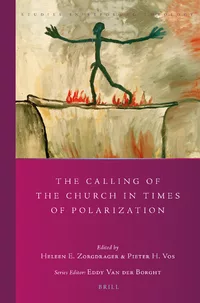https://doi.org/10.1111/moth.13000
누가-행전의 일부 구절이 예수와 평화를 연결하고 있지만(예: 눅 2:14; 행 10:36), 누가의 평화 모티프를 더 면밀히 고찰하면 복합적인 그림이 드러난다. 본 논문은 제자도의 맥락에서 발생하는 재정적 혼란과 가족 내 분열에 관한 예수의 혹독한 말씀과 더불어 평화가 등장하는 두 본문을 검토하여, 누가가 이해하는 평화에 대한 우리의 이해에 기여한다.
먼저, 예수가 “땅에 평화를 주러 온 것이 아니”라는(12:49) 선언을 포함하며, 한 집안이 스스로 분쟁하는 모습을 묘사하는(12:52-53) 누가복음 12장 49-53절을 분석한다. 이어서, 큰 대가를 치르는 제자도에 관한 비유 안에서 평화를 언급하는(14:32) 누가복음 14장 25-33절을 다룬다. 누가복음의 서사적 배경과 구약/히브리 성경과의 상호텍스트성에 주목함으로써, 필자는 이 본문들이 제자도가 재정적 안정과 가족 관계에 미칠 수 있는 다소 비평화적인 현세적 영향을 어떻게 부각하는지를 보여준다.
동시에, 누가복음은 십자가에 못 박히고 부활하신 주님으로서 현재적이면서도 종말론적인 평화를 모두 제공하시는(예: 24:36) 예수를 위해 그러한 혼란을 감내하는 것이 가치 있는 일임을 또한 전달한다. 누가의 평화에 관한 모든 문제를 해결하려는 시도는 아니지만, 본 논문이 제시하는 해석은 이 모티프에 대한 누가의 미묘한 접근이 제기하는 몇 가지 실천적-신학적 초대와 도전에 초점을 맞춘다.
Although some passages in Luke-Acts connect Jesus with peace (e.g., Luke 2:14; Acts 10:36), closer consideration of the Lukan peace motif yields a complex picture. This article contributes to our understanding of Lukan peace by examining two passages in which peace occurs alongside some of Jesus's harder words about financial disruption and intrafamilial division in the context of discipleship. I first analyze Luke 12:49-53, which includes Jesus's statement that he did not come to “give peace on the earth” (12:49) and describes households turned against themselves (12:52-53). Then, I take up Luke 14:25-33, which refers to peace within a parable about costly discipleship (14:32). Through attention to the Lukan narrative setting and Old Testament/Hebrew Bible intertexts, I show how these passages highlight the rather unpeaceful temporal effects that discipleship may have on financial stability and familial relationships. At the same time, Luke's Gospel also conveys the worthwhileness of enduring such disruptions for the sake of Jesus, who as the crucified and risen Lord offers both present and eschatological peace (e.g., 24:36). Without attempting to resolve all questions about Lukan peace, the interpretation advanced here brings into focus some practical theological invitations/challenges posed by Luke's nuanced treatment of this motif.







